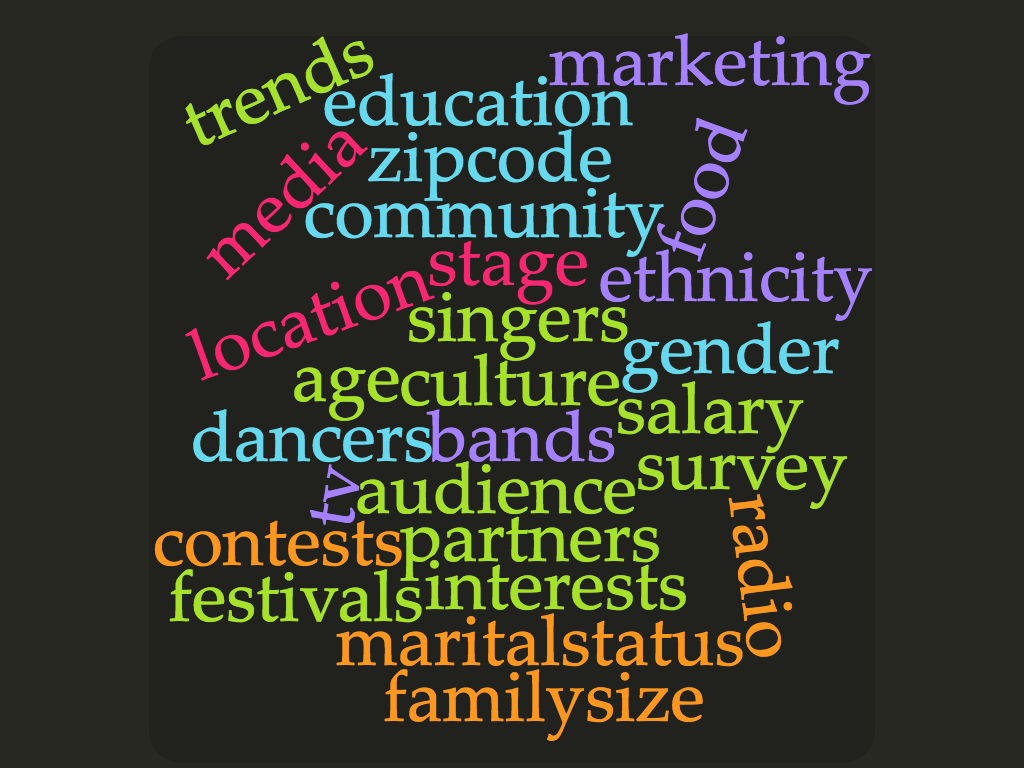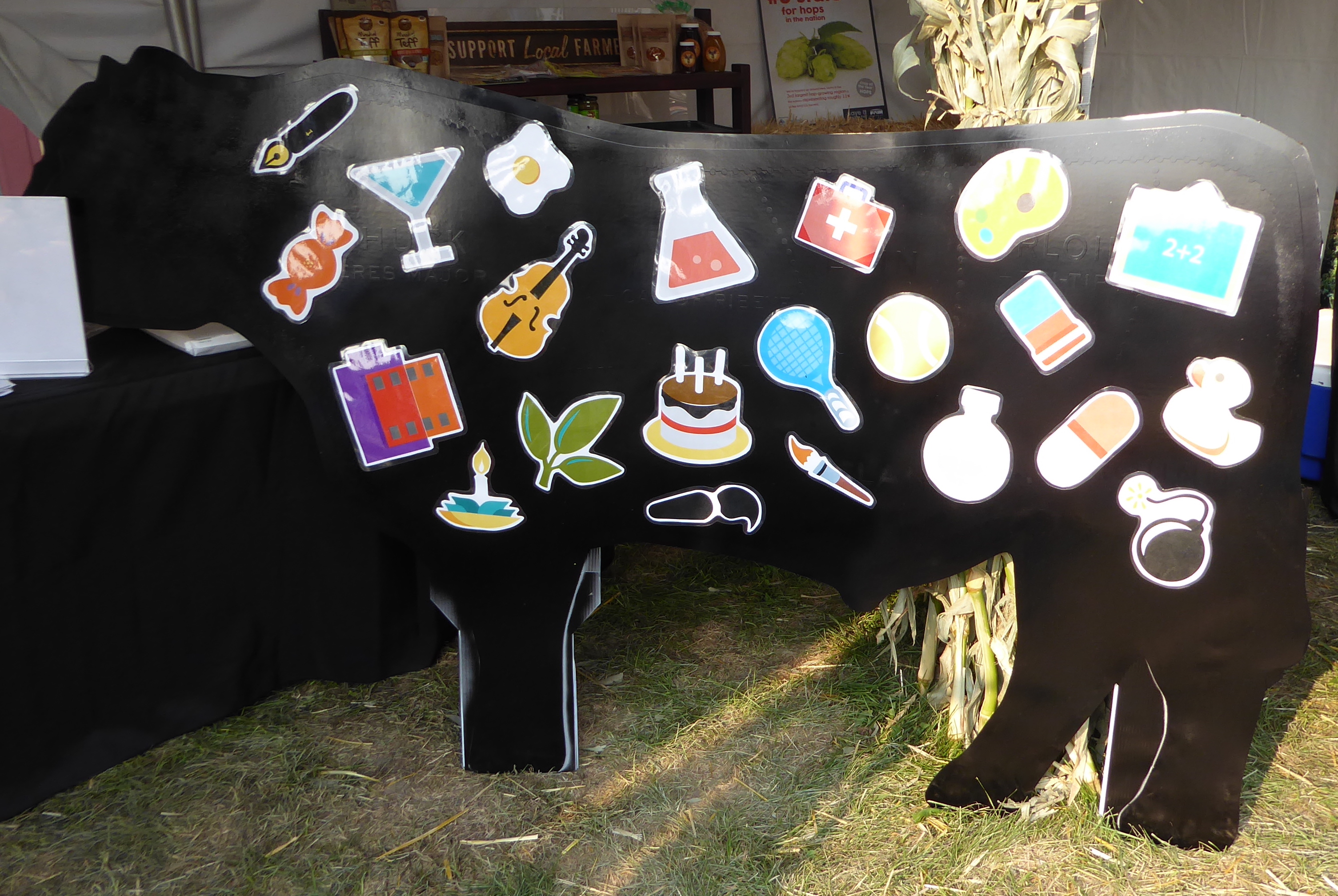
by fairplanning | Jan 12, 2019 | Blog, Fair Planning, Fair Programming, Target Marketing, Uncategorized
How do you increase attendance? Attract new patrons correct? And to attract new patrons, fair management needs to do some research and make some decisions. First, what demographic are you trying to reach?
How do you determine which group to focus on? We have found this information in our survey. By doing a survey at your fair to learn about the current attendees and identifying patterns. If you aren’t collecting demographic information annually or at least every other year you have no data to make good decisions. Your survey must include age (or a range), gender, zip code and ethnicity at a minimum.
We recently discovered a significant increase in our attendance by the asian population using our onsite fair survey. Further research indicated that our community demographic had changed as well. We quickly realized we needed to make some adjustments to our programming to begin the process of attracting the growing asian demographic in our community to the Fair, and, naturally, increasing attendance at our fair.
Based on our fair survey from a three year period we chose to focus on the top two growing sub-demographics: chinese americans and indian americans.
The next decision was made to create 2 new festivals during the Fair featuring chinese american and indian american entertainment, food, vendors, contests, etc.. We’ve already been doing this in the hispanic market with great success. Over the past 3 Fairs, we have been working with a team from the local Univision TV/Radio media group. The Fair purchases advertising on their TV and Radio outlets and pays for entertainment. Univision helps promote our hispanic event, Festival Latino, and arranges for the entertainment. In addition, the Fair provides marketing collateral in spanish for Univision to distribute at events they produce or events they attend. It’s been a successful process, so we decided to try the same process with these two new festivals.
We contacted our media buyers, who did research to determine which media partner would be the best partnership. Stay tuned for updates as we go through this process.
by fairplanning | Nov 21, 2018 | Blog, Safety and Emergency Planning
Are you and your team ready to face an emergency evacuation of your Fairgrounds during Fair? And what if something happened during a non-Fairtime event? Have you reviewed your emergency evacuation plan lately? Is it fairtime specific or can it also be used at any time? Do you conduct “emergency scenarios” on a regular basis as a training exercise for your team? Do you know what your emergency plan is? If you have had staff changes, is your emergency/evacuation plan up to date? Do your Board of Directors know what their role is if an emergency was to occur on your fairgrounds? Who is authorized to speak to media during an event? …………. and the list goes on!.
These are all very important questions to ask of yourself and your organization. Take some time to develop an emergency action plan/emergency response plan/…..whatever you choose to call it. Make sure it exists and that your team and Board of Directors know what their roles area during an emergency, and…..practice! You can never practice enough!
The public’s expectation when they step onto your fairgrounds is that they will be safe. While no one can predict every type of scenario, make sure your team is prepared to communicate if an emergency were to occur on your fairgrounds.
Here are some items to include in your emergency plan:
- Identify who can initiate the emergency plan. If you have a small team, it may seem obvious who will make the decision, but this should be written down. During your Fair, this decision making responsibility may change to law enforcement.
- If the situation requires outside resources, such as first aid or law enforcement then call 911 or call your on-site emergency number.
- Names, positions and cell phone numbers of your Management Team.
- The location of where the Incident Command Center will be. This could be your administration office board room, or the office that your security personnel are during the fair. Having identified a couple alternative locations is important in the event that your primary location isn’t available.
- Regrouping Area – This would be the location that all employees would report to in the event that all buildings and structures are damaged. There should be a primary and secondary regrouping area in the event that the primary regrouping area is unavailable or unaccessible.
- Responsibilities and Actions of managers and supervisors – If first responders are called in, they will take action immediately and will manage the incident. Your role is to assist the first responders if asked, but more importantly to take care of your team and the public.
- Management Team – meet in the designated area to access incident and notify their supervisors of the incident via cell phone, land line, radio or in person if unable to reach their staff.
- Supervisors – report to their work station unless they are involved in the incident. If necessary, evacuate their work area and insure that all their employees are accounted for.
- Employees – assist in directing patrons to the nearest exit or to safe areas away from the incident. Employees may be asked to assist first responders as well. After completing their tasks, then they will report to the regrouping area.
- Human Resources – make sure to have an up to date list of which employees are working that day. This list will be used to verify the employee’s presence at the regrouping area.
- Media – make sure to have a media protocol in place. This will identify who is authorized to speak on behalf of the organization. First responders will have their public information officer (PIO) on site or will be communicating with them if they are offsite. It’s important that the Fair’s media spokesperson work with the PIO’s to insure a consistent message.
- Evacuation – identify who has the authority to make the decision to evacuate. If first responders are involved, the decision is theirs. If no first responders are on site, the CEO/Management team will most likely make the decision. It is possible that the on-site Supervisor will also have to make the decision.
- List of local emergency contacts – law enforcement (sheriff and police), fire department, private security if present
- Note that 911 should be used ONLY in the event of an immediate life threatening crisis or emergency.
- Regional Disaster – your fairgrounds may be designated as a disaster relief center for the Office of Emergency Services. Make sure you have spoken with those in your area to learn their protocol and their expectations as well as your’s during a regional disaster.
Most important of all, don’t let an incident be the first time you interact with first responders in your area. Set up regular meetings (annual/quarterly) to meet and discuss and review emergency planning procedures. Staff changes with first responders just like our fair staff changes. It’s important to know each other before an incident.
Taking the steps above will help you and your organization be prepared when that emergency or incident does arise.
If you would like to purchase a copy of the book, How to Plan Pay For and Put On a Wildly Successful Fair click here.

by fairplanning | Oct 15, 2017 | Competitive Exhibits, Stem/Steam
What a clever way to visually present beef by-products to your fairgoers.

by fairplanning | Oct 7, 2017 | Blog, Competitive Exhibits, Fair Planning, Fair Programming, Stem/Steam

This book contains 12 examples of how to create low cost, simple, and easy interactive displays. From simple photo ops to using hashtags to promote your fair on social media, each of these ideas is very easy to create without a large expense.
This book can be used as a workbook. Following each example is a “Notes” page. Make sure to jot down any ideas you have on how you can incorporate a similar idea at your own event.
Don’t try to do too many of these at once. Start with one idea, and then change it up the next year.
The following year, add in another activity.
Pretty soon, you’ll have multiple activities!
Buy My Book
by fairplanning | Apr 10, 2017 | Blog, Fair Planning, General Business
Meetings are a necessary evil of any business, but they can easily suck away everyone’s valuable time. With a few careful choices in meeting planning, a savvy leader can ensure everyone gets the information they need, without wasting the day.
#1: Schedule only what you need. Rather than the usual thirty minute or hour block, go with 15 minutes, or even less. Meetings expand to fill their allotted time.
#2: Don’t sit down. Getting comfortable around the conference table invites everyone to accept a longer meeting. Stand or walk, and you’ll get the meeting done on time.
#3: Sound the alarm. Visibly set a timer, and everyone will be more likely to keep on-task and on- When the alarm signals the end of the meeting, that’s it. The meeting is over.
#4: Expect readiness. Send out a reminder email the day before the meeting. Ask everyone to bring their fully-formed thoughts about the subject at hand. Everyone should come prepared with their thoughts and convey them succinctly.
#5: Form an action plan. Meetings should help everyone figure something out and create a plan going forward that swings into action as soon as the meeting is over. Make it clear who will do what and when it will be complete.
#6: Follow up. Check in on the action points soon after they are due. Don’t hold another meeting for this – simply handle it by spending a few minutes with each person to find out where they are on the tasks. Update others via email.
Streamlined gatherings mean everyone will walk away with the information they need but no one will be wasting time around the conference table.







